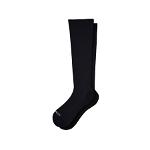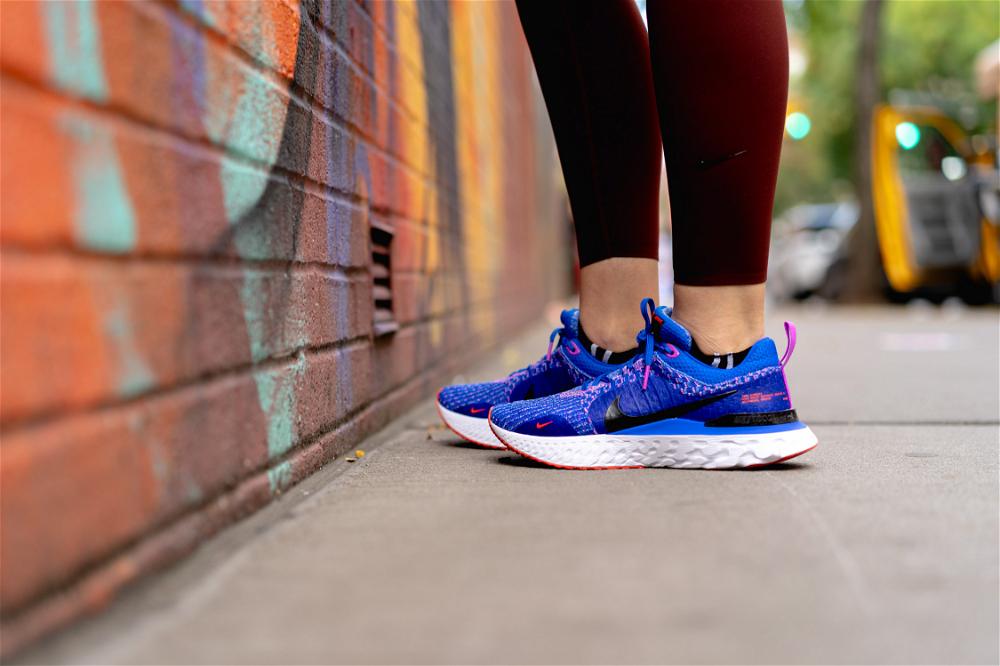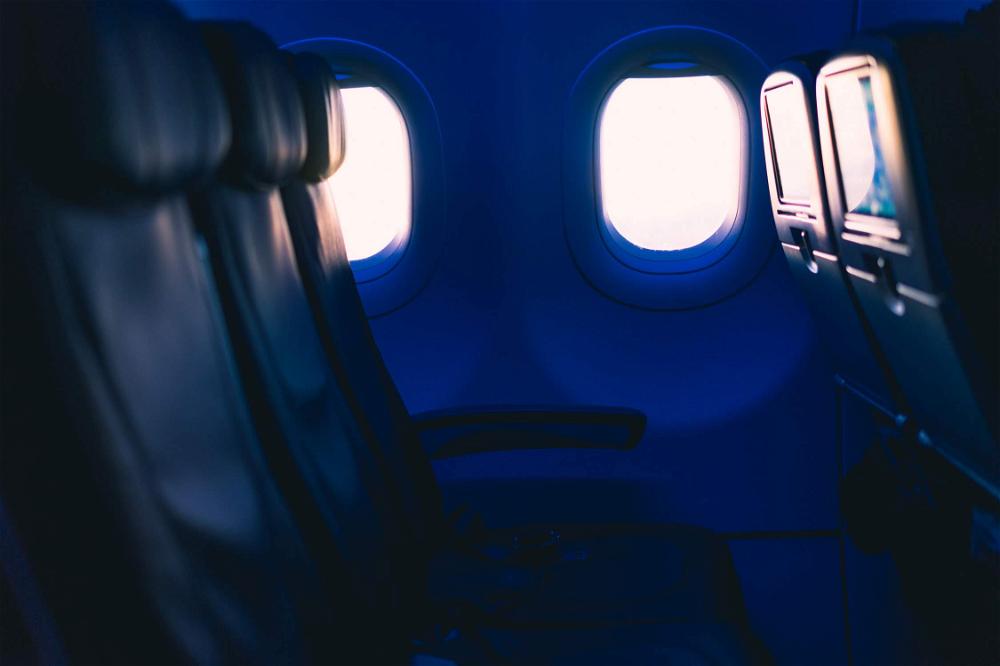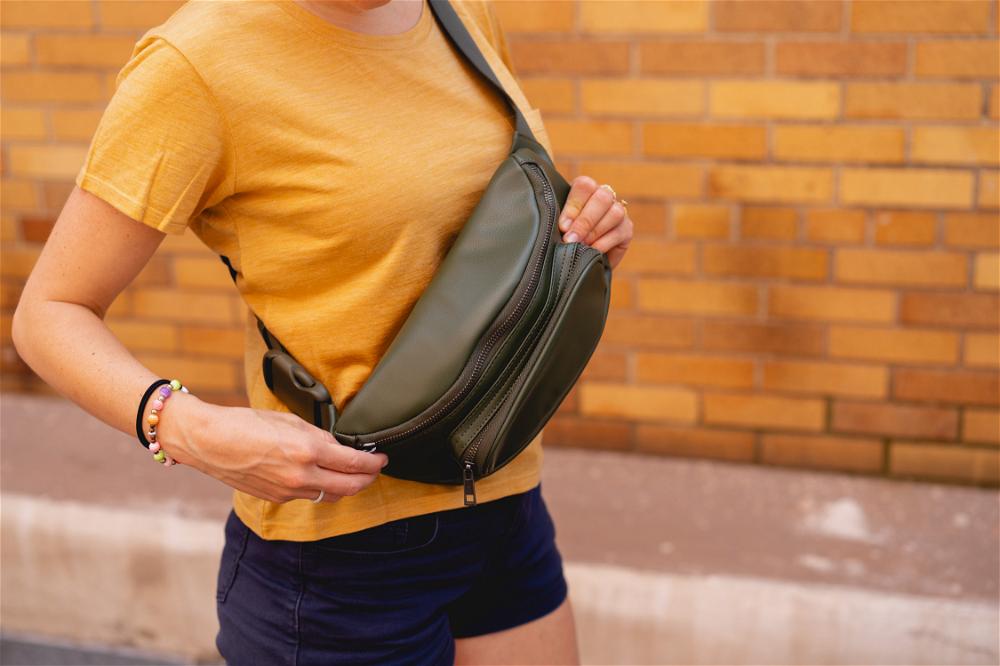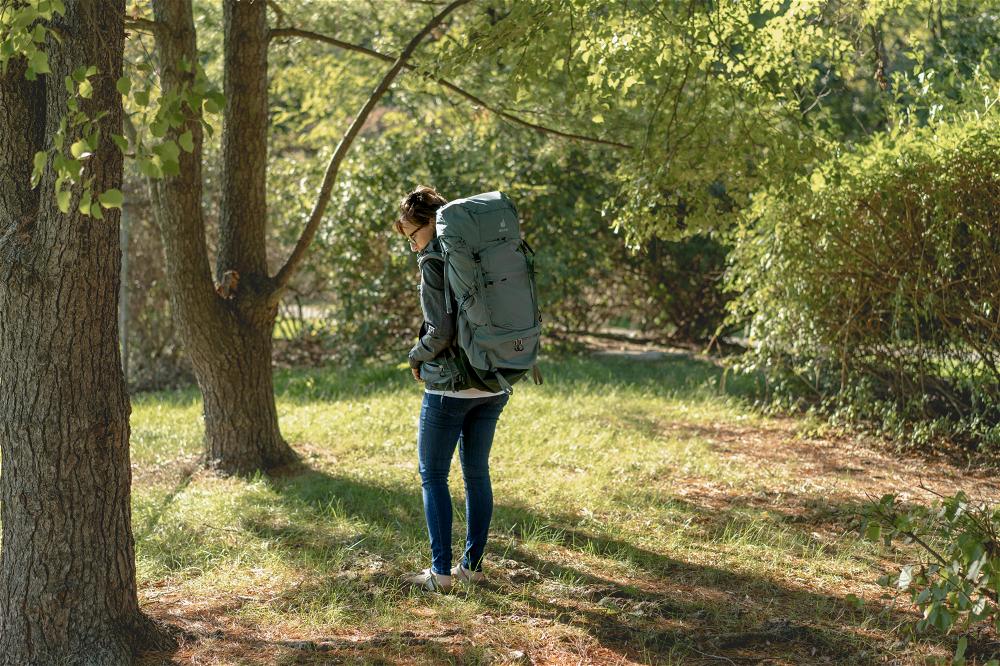6 Best Travel Compression Socks for Long Flights
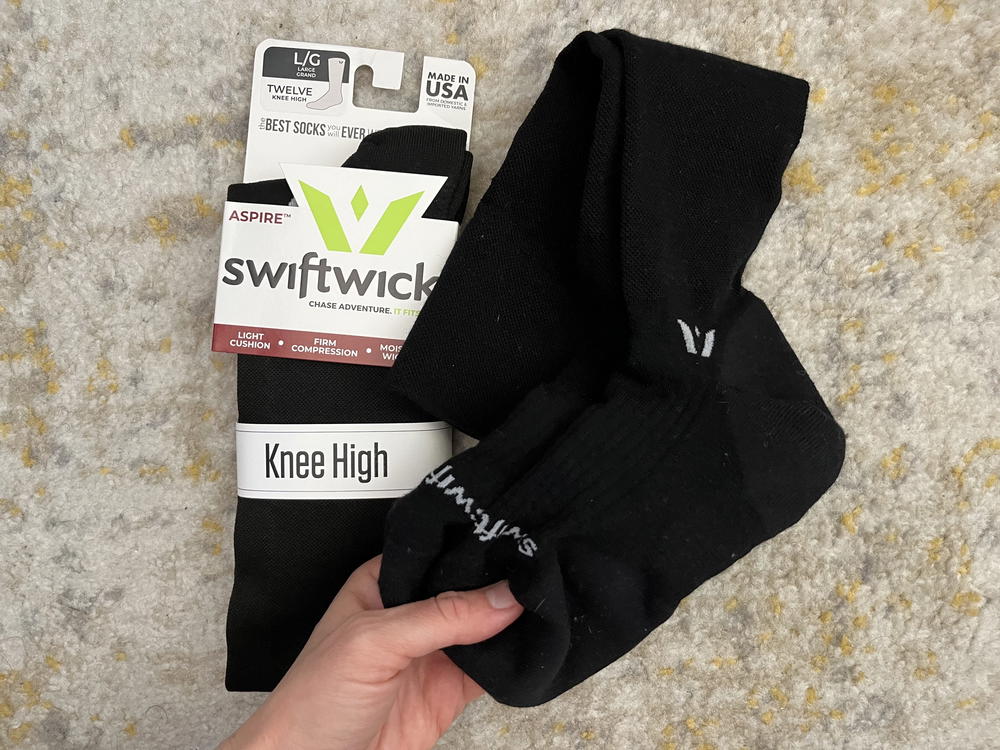
See which 6 best compression socks for travel we recommend. We've found that compression socks are helpful to have during flying and road trips, for improving blood flow and overall comfort! Use the travel suggestions in this list.
This article may contain affiliate links. We earn a small commission when you purchase via those links — at no extra cost to you. It's only us (Becca & Dan) working on this website, so we value your support! Read our privacy policy and learn more about us.
Best Travel Compression Socks
MinimizeFor years, I heard about “compression socks.” What were they, and did I need them?
If we fast forward to now, I have an array of pairs from different brands. They come in different colors, materials and heights, with added features like cushioning, toe reinforcement, arch support and ventilation for my feet. I feel like my feet are traveling more comfortably than the rest of my body when I’m flying or sitting for a while in transit!
After a bunch of research, some testing out different brands and ultimately seeing if compression socks were for us, we put together this list of interesting info and the best compression socks to try for your next trip.
The best compression socks for travel (flying and time in transit)
Here are our top picks for compression socks that will keep you comfortable on long flights and during extended travel.
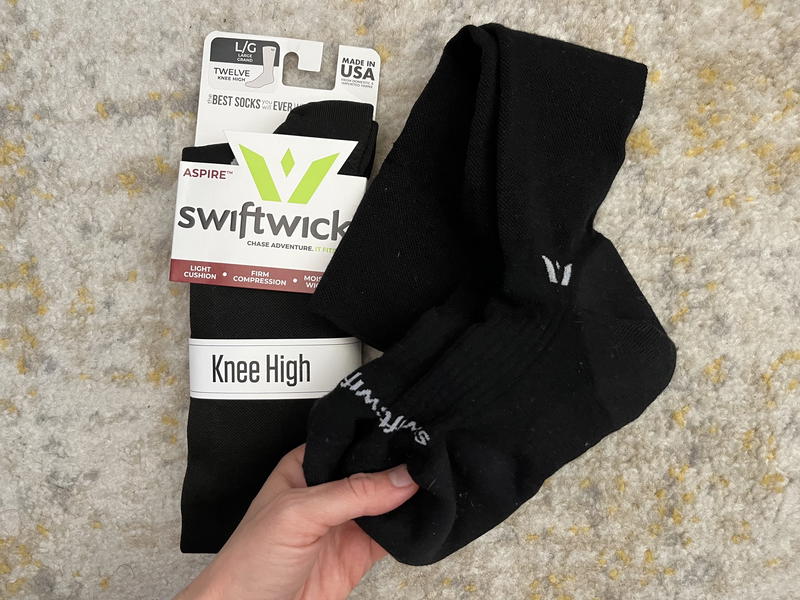
Why wear compression socks when traveling?
The idea with compression socks is that the added pressure from their tightness (in both the foot and the calf) helps fight the “effects of gravity” on your body, which helps avoid fluid buildup.
Wearing compression socks for travel is an especially good idea if you are prone to swelling or are recovering from an athletic injury. Wait, and one more thing–compression socks are always recommended for traveling while pregnant!
The term “graduated” compression socks refers to a design that focuses most of the pressure around the ankle, gradually getting lighter as the sock fits up the length of the leg. You’ll find that this is a special type, and more often than not, compression socks are pretty simple.
Unless you have a specific recommendation from a doctor or physical therapist, we recommend looking for compression socks that have 10-20 mmHg (millimeters of mercury, the same unit used to measure blood pressure) of pressure. This is a comfortable level that can be worn by anyone, all day long, on a travel day or just hanging around at home.
How to put on compression socks (how to wear them)
Many people find that compression socks are the best travel socks for long travel days spent flying. But the tightness makes them difficult to physically get on.
Turn each sock almost inside-out before putting it on your foot, then roll it up your leg. It’s kind of fun! Here is how to do it:
- Reach your arm all the way into the sock, until your hand is touching the inside of the heel.
- Pinch the fabric at the heel and hold it while you peel the sock down from your arm, turning the upper portion of the sock inside out.
- Remove your hand and fit your foot into the foot of the sock.
- Roll the rest of the sock up and over your calf.
Another bit of advice: wear the socks at their natural and intended length. This means to avoid tugging them up, folding them over, or rolling them down. Doing so will add pressure to a particular point on your body, potentially causing more restriction than you need.
If you are short or have particularly short legs, and you buy taller-size compression socks, consider that they may go up to your knees.
Understanding compression levels in compression socks (Did you know this?)
Compression socks have different compression levels for different reasons. Not many people know this, but they use the same measurement as blood pressure, which is millimeters of mercury (mmHg). What a cool fact!
- Less than 20 mmHg: Best for those who want extra support but have no specific medical concerns (consider this level of compression for regular flying or just plain comfort)
- 20-30 mmHg: This level is usually prescribed to relieve varicose veins
- 30 mmHg or higher: Can help those with frequent leg pain and swelling (considered kind of intense)
Unless you have a specific recommendation from a doctor or physical therapist, 10-20 mmHg is typically the most comfortable level that can be worn all day long. If you have very specific concerns or questions, contact your healthcare provider! (This is just a travel suggestion article)
Best materials for travel compression socks
Compression socks come in a few forms, and that means that different companies make them from different materials. Some are totally synthetic, and some contain more natural fibers like merino wool, for example.
Merino wool compression socks
Merino wool, one of our favorite natural travel fabric materials, is fantastic for compression socks because it provides benefits like:
- Temperature regulation
- Natural odor resistance
- Moisture-wicking properties
- Comfort, without the itch of traditional wool
Synthetic blend compression socks
Synthetic materials like nylon, spandex, and polyester are common in compression socks because they:
- Maintain elasticity for compression
- Are more affordable
- Dry quickly
- Are easy to care for (but I don’t suggest running them on high, through your dryer)
However, synthetics don’t provide the same breathability as merino wool and can trap moisture, potentially causing odors. There’s a lot to learn about sock materials!
How long can you wear compression socks?
You can wear compression socks for as long as you need during travel, from home, all during your flight and until you get to your destination and unpack. By then, you will probably want to give your legs a break and let them air out. That’s what I do.
Basically, if you’re going through a lot of sitting and standing, then wearing compression socks can be helpful. Eventually, you’ll want to let your calves have a break, but compression socks can feel really good, especially while you’re sedentary and not moving.
So, once it’s time to lie down and get some real rest, switch into regular socks (or no socks!). You’ll no longer need the compression, once you’re either sleeping in a bed, or walking around in your vacation destination.
Which height should compression socks be?
This really depends on which area of your foot, ankle or calf you want to target. If you know which parts of your legs are feeling fatigued after a long flight, you can choose accordingly:
- Crew and ankle-length compression socks: Best for relieving pressure around your feet and ankles. Well-suited for everyday use, such as short flights and city commutes. Crew and ankle length compression socks are a little bit harder to come by.
- Knee-high compression socks: These are the most popular and tend to be what people think of if you mention “compression socks.” Knee-high ones are more likely to help those traveling long distances when there’s a chance that legs could swell or feel unwell.
Care and Maintenance
To extend the life of your compression socks, try these tips from our bag of tricks:
- Don’t ball them up to store them - This stretches them out, and they’ll lose their shape more quickly.
- Turn them inside out and wash them in warm or cold water on a gentle cycle as needed.
- Avoid fabric softener - It really is not necessary and could just break down the materials.
- Air-dry if possible - Heat from the dryer can break down the fabric and reduce elasticity, which is the whole point of compression socks!
- Replace after about six months if you wear them regularly, as they lose elasticity over time. When they feel like they’re not doing their job anymore, try new ones.
More resources from us on this topic
Now that you’ve found the perfect travel compression socks, here’s what to read next:
- Best Travel Socks for Every Adventure - Complete guide to choosing the right socks
- Best Travel Accessories for Long Flights - Complete your long-haul kit
- Best Hiking Socks for Travel - For your active adventures
- Best Quick-Drying Socks for Travel - For wet weather and washing
Pro tips from us about compression sock success
- Try them at home first: Before a long trip, wear your compression socks for a few hours at home to get used to how they feel. If you don’t like them, don’t bring them along!
- Measure your calf: Check your calf circumference to ensure you get the right size. Some brands will offer varieties.
- Bring an extra pair: Always pack a backup pair if you’re really committed to having a clean pair for the flight home.
- Wear them on the journey: Put them on before you leave for the airport to maximize their benefits.
- Style them like a pro: I’ve put compression socks on and worn them with shorts, just to show off how cool I am. I’ve also worn them under baggy jeans.
🎒 Found the right gear?
We research and test the gear we recommend, so you can pack with confidence. If our suggestions improved your gear picks, treating us to a coffee keeps the reviews coming.
Help us test more gearYou may also like
-
![]()
10 Best Hiking Socks for Travel
We rate the 10 best hiking socks for travel, from lightweight merino wool socks to moisture-wicking synthetic ones. For keeping your feet dry, supported and comfy, see which brands we recommend.
-
![]()
18 Handy Travel-Sized Products for Working Out While Traveling
What are our most travel-ready workout items to bring on a trip? These travel-sized exercise essentials are portable and will fit in your luggage for on-the-go fitness.
-
![Dark empty airplane row tinted blue]()
14 Best Travel Pillows (Get Great Sleep in Transit)
What makes a good travel pillow? In this list, check out neck pillows for flights and small travel pillows for comfort when on the go.
-
![]()
Kibou Fanny Pack Review: Best Minimalist Travel Diaper Bag?
Is the Kibou minimalist fanny pack diaper bag worth it for traveling parents? See how this road trip and flight day must-have worked out for me on trips with a baby.
-
![]()
Baby Tula Explore Carrier Review: Sturdy, Comfy and Supportive
I tested one of Baby Tula's most popular baby carriers, the Explore Carrier, because I wanted a front-facing carry option for my baby. Read my review, and find a discount code inside.
-
![]()
10 Best Helpful Travel Accessories for Backpackers in 2025
What are the best and most useful products to pack for a backpacking trip? After years of backpacking, I’m rating my favorite backpacker accessories for travelers.
